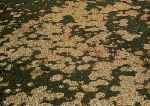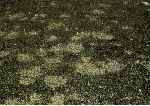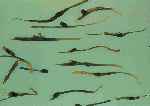| |
Snow Scald | |
| |
|
|
| |
|
|
| |



| Myriosclerotinia borealis or Sclerotinia borealis
Disease description
Patches of dead grass plants with water-soaked leaves and sparse gray fungus appear at snow melt, which then bleach almost white. Black sclerotia 0.5 to about 7 mm long found on leaves and in plant bases. Probably across Canada except in milder climates or low snow regions, but little detailed information except from West.
Predisposing factors
- most common grasses are susceptible
- Agrostis cultivars are sometimes severely damaged in the Prairies, but severe tuff damage occurs only in higher snowfall areas or years with long-duration snow cover
- endemic on native grasses and cultivated species in ditches and where snow is trapped adjacent to mown turf
Cultural control
Spread snow drifts to encourage rapid melting, especially on fine bent grass turf. Control disease on adjacent rougher turf. Seaside less susceptible than Penn-cross bent grass. |
|
|
| |
|
|
| |
For more information about the content of this document, contact Shelley Barkley.
This information published to the web on June 1, 2001.
Last Reviewed/Revised on June 1, 2018.
|
|